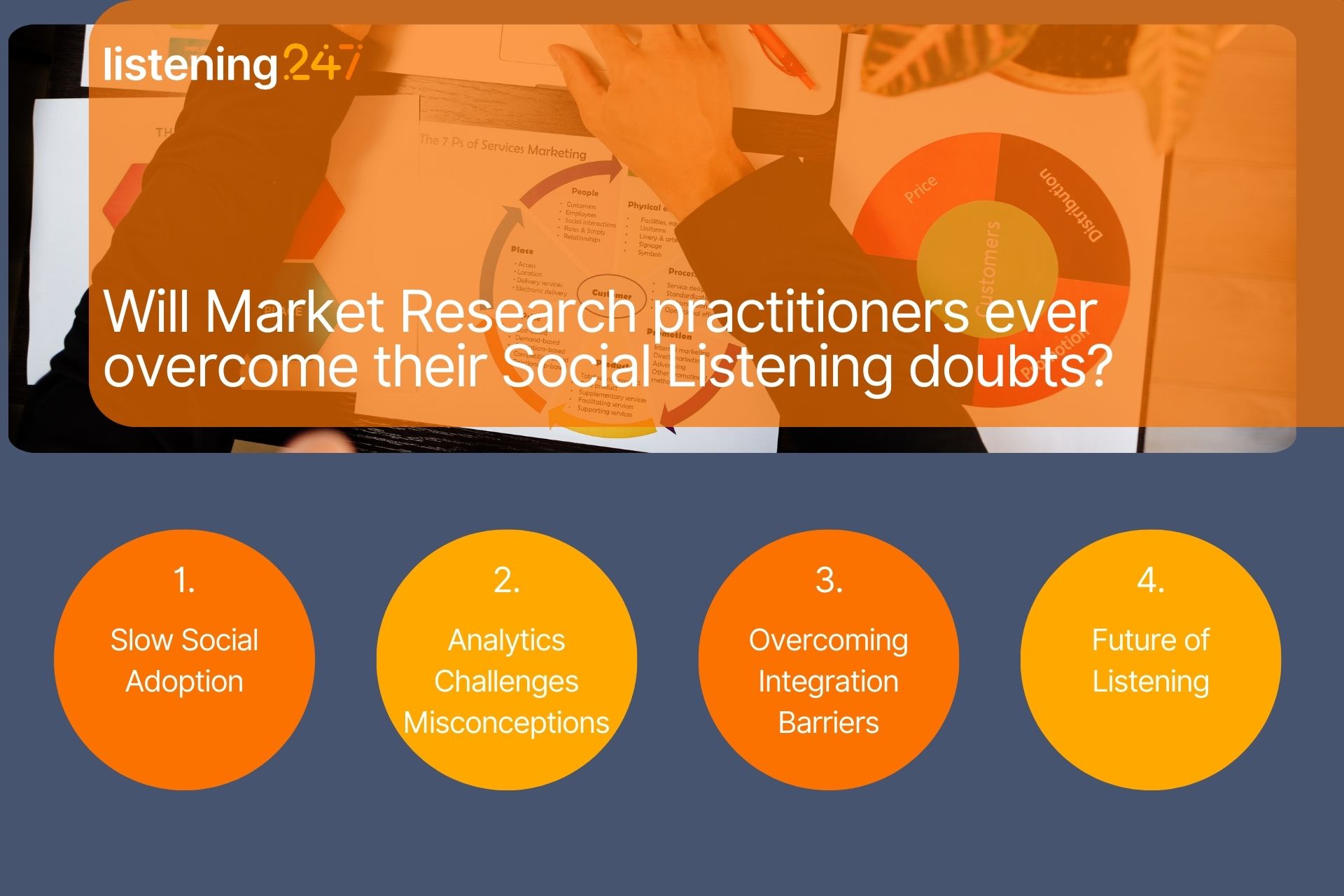
Blog Post
Will Market Research practitioners ever overcome their Social Listening doubts?

Even though I suspect the reasons, I am still amazed with how slow the adoption of social media listening has been, by the market research community.
I have written about this many times in the past, but let me repeat what I think are the main reasons that social media listening and social analytics do not yet account for 10-20% of the total market research spend. (The percentage spent is probably more like 3-4% currently.)
Here are some reasons:
- 1. The market research buyers tested a social media monitoring tool (one of over 1,000 available) which was developed by a pure tech company for a purpose other than customer insights. They found its accuracy to be lacking and decided that this kind of tools are not appropriate for market research
- 2. Even when they did challenge the accuracy, the kind of analysis and insights they received left them and their internal clients seriously underwhelmed
- 3. The digital marketing department of their company already subscribes to a social media monitoring tool and if they ever need to check something they will ask them
- 4. Their media agency provides them with ad-hoc reports using their social media monitoring subscription – and they are not that useful anyway
The die-hard market research purists who have not yet realised that the world has changed, ask the question: how representative is the respondent sample? Every time I hear this question I want to pull my hair and run out of the room screaming like a lunatic. Why? Because we are not dealing with a sample and we are not dealing with respondents.
There is also a common belief that only negative people post, so the unsolicited opinions of the post authors (let’s call them that instead of ‘respondents’) are biased, and thus do not represent what the majority of the relevant population feel and think. Well, first of all, this is not true given that for most product categories the majority of the posts are of NEUTRAL sentiment. Further to that, there are large variations in sentiment depending on the product category, as the graph below indicates.
Having said that, even if it were true that only the negative people post, then there is a very good reason for insight professionals to understand the negativity in detail, because the other 95% who according to “these experts” just read but don’t post, are impacted by the negative posts and their purchase behaviour might be affected. As a matter of fact, in an R&D project we conducted with Nielsen in the Arabian Gulf, we found that sentiment correlates with sales of FMCG categories at R2=0.82. This is a very high correlation and I will dare say that there is also causality, as the direction of influence can only be “sentiment impacts sales” and not “sales impact sentiment”.
Now let me answer the question that was posted here on December 27th, announcing this series of four posts about the survival of the fittest (this is the last of the four): Which manifestation of social media monitoring will end up being accepted by market research practitioners?
‘None’ is a possible answer, but not probable in my opinion. Social media listening and analytics will receive the attention (and investment) it deserves when we:
A. demonstrate that we can discover relevant and unique insights in social listening that can enhance or replace surveys and focus groups
B. prove that the accuracy of the passive data that form the basis of the insights from online sources is unquestionable
C. show that social listening data can be integrated with survey data and behavioural data to produce a result that is by far superior than the sum of its parts
listening247 has already demonstrated all the above and more e.g. analyse images and add their context (most often: product usage occasion) to the textual expressions of opinions online; the only problem is, not many people know about it. The more we get the word out there that social media listening can be a valid market research method, the more change we will affect. You don’t have to take my word for it, ask Nielsen or SABMiller or Ovum. You can also ask me any question you want and put forward any objection you may have about social media listening and analytics; however, be warned, your objections will be crushed with solid proof. Go on then, talk to me on Twitter @listening247_CEO.
.